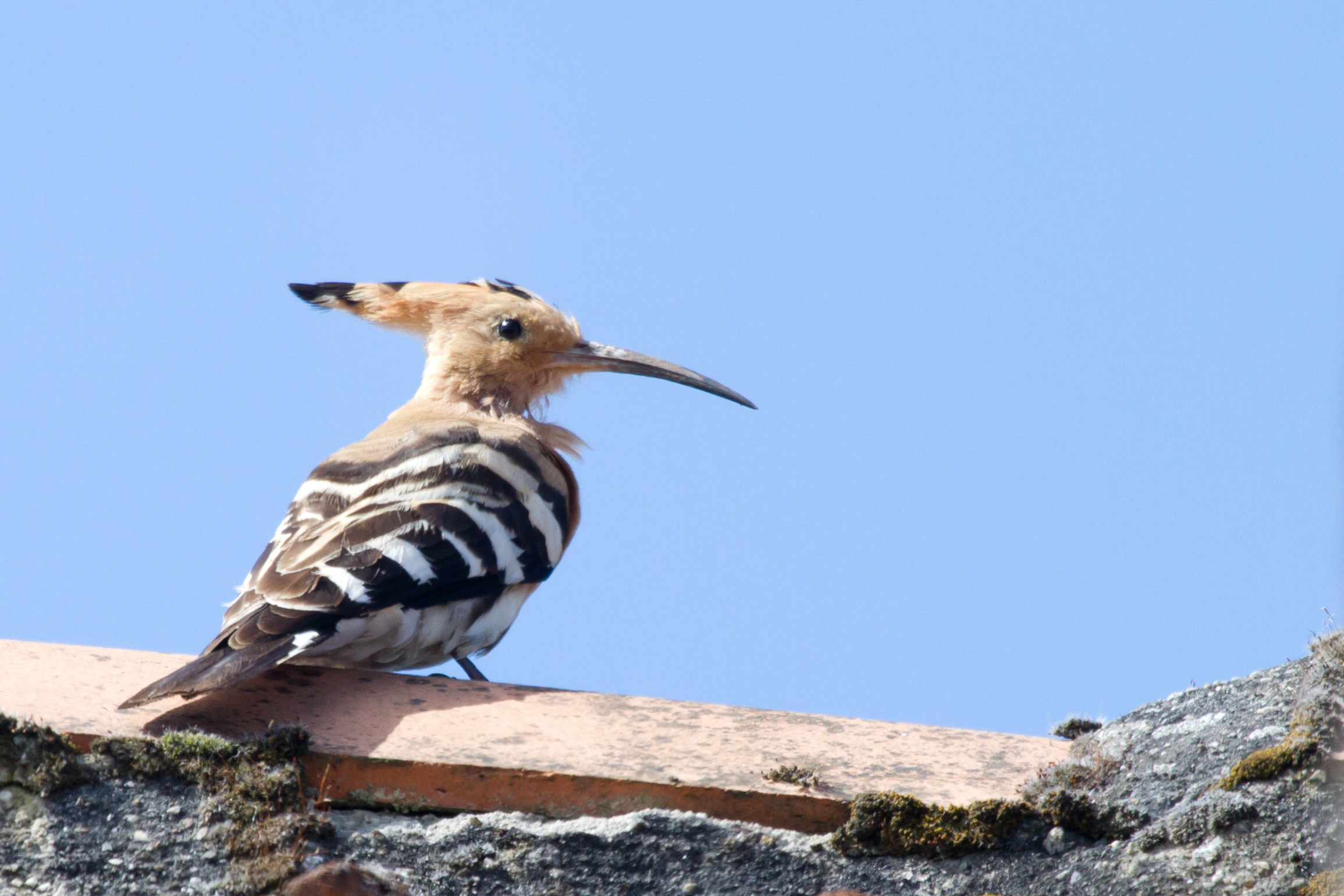This is an article that I wrote for the July 2019 edition of the Cumnor Village Magazine:
This month’s Bird of the Month is a summer holiday special: the Hoopoe. This is one of the most distinctive birds in the world. Hoopoes do not usually nest in the UK, but are found widely across most of Europe and Asia. Every year some reach England in the spring and summer. Some years there are a few dozen sightings, sometimes up to one hundred birds are recorded. In Oxfordshire the Hoopoe is a rare bird, with about 8 records in total. It is quite large bird, about the size of a Jay, but has a long downcurved bill and a fabulous crest. The wings and tail are boldly marked with black-and-white, whilst the head and back are cinnamon-pink.
 Hoopoe, France, July 2012
Hoopoe, France, July 2012
In flight, the rounded wings are very obvious, flashing black and white. The wings have a slow-motion action in flight, leading to comparisons with a huge black-and-white butterfly flapping past. Despite this, Hoopoes are strong fliers. Most of the European population migrates across the Sahara to southern Africa, although a few birds remain in southern Spain or north Africa over the northern winter. 
Hoopoe, France, July 2012
Like last months bird of the month, the Cuckoo, Hoopoes have an onomatopoeic name. Their simple repetitive song has led many human cultures to name this species after the sound that it sings in spring. In Afghanistan it is “poppoo”; in the middle east “hud-hud”; in Portugal “poup” and in English “hoopoe”. Phonetically the song is best written as “hoo-hoo, hoo-hoo”. It sounds as if one is blowing gently across the top of an open glass bottle.
 Hoopoe, Oman, November 2015
Hoopoe, Oman, November 2015
For millennia Hoopoes have nested in holes, in trees or in cliffs. With the relatively recent development of human structures, Hoopoes have also taken to nesting in man-made cavities. This, combined with their distinctive and obvious appearance, means that Hoopoes have a long and rich association with human culture. The Hoopoe is an Egyptian hieroglyph, but also appeared to have a medicinal function. Mark Cocker (in “Birds and People” 2013) describes ancient Egyptian prescriptions that were smeared on the eyelids to inspire visions that contained Hoopoe blood as an ingredient. Cocker goes on to describe the broad-spectrum application of the Hoopoe for a wide range of ailments in mediaeval times:
“The left pinion is good for the man who is in thrall to his wife; Tie up the right shoulder in a piece of new rag… and hang it over a woman who is ill in her body and she shall have relief; Dry its skull, macerate it in oil and rub it on any part of the body thou wishest and it shall destroy hair; Having salted the heart of this bird… give it to the woman whose child will not come from her. Let her grasp it in her left hand and the child will come from the womb straightaway”
The Hoopoe also has an important role in middle eastern culture. In the Qur’an the Prophet Muhammad forbids Muslims to kill the Hoopoe. The bird has an important status as a messenger between King Solomon and his bride-to-be, the Queen of Sheeba.
Remarkably, a Hoopoe has been recorded in Cumnor. Steve Heath has provided an account of finding this exotic species in April 2006: “I frequently used to take my dog for a walk down Leys Road to Bablock Hythe and particularly during the spring to look for migrants and early butterflies. The route has good views across Farmoor Reservoir and Wytham Woods to the north and passes through farmland flanked by hedgerows and some traditional hay meadows. Along this route lies Long Leys Farm. Over the years I had got to know the resident gardener Michael Collins. Walking my dog back home on the morning of 23rd April Michael remarked that he had seen an odd bird briefly around the Farm gardens the day before. Knowing Michael, I felt this was worth a look. After a fairly long search a Hoopoe came into view close to the orchard, at the rear of the house. The word was put out and several people managed to see the bird before it became elusive. It was not, to my knowledge seen again after the morning of 23rd April”.
 A very wet Hoopoe, Sichuan, China, May 2016
A very wet Hoopoe, Sichuan, China, May 2016
If you are going on holiday into Europe this summer, watch out for this beautiful and distinctive bird. It can often be found feeding on the ground in sand dunes behind the beaches. If you are exceptionally lucky you could catch a glimpse of a Hoopoe in Oxfordshire, a dazzling flash of black, white, pink, crest and bill. Seeing a Hoopoe is always a moment to treasure.
Words and pictures by Tom Bedford. Many thanks to Steve Heath for his contribution.
